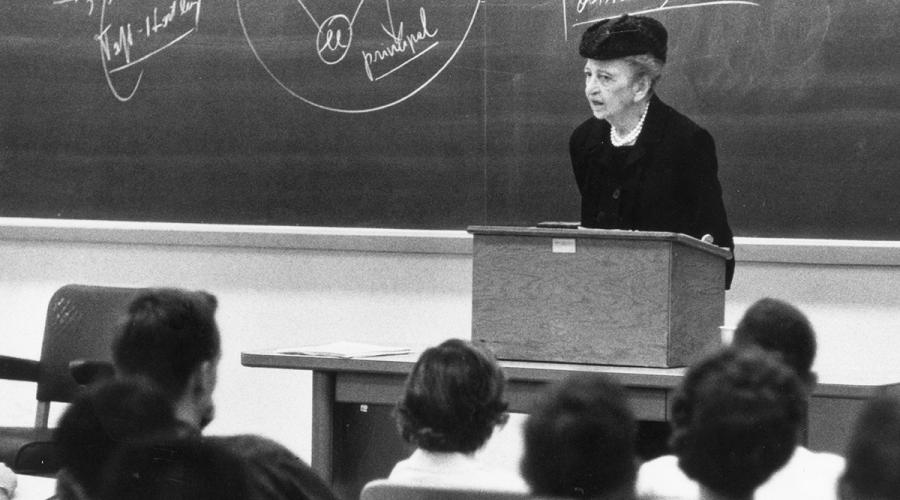
Frances Perkins
Impactful advocate of workers' rights who served as Secretary of Labor
The first fact about Frances Perkins usually cited is that she was the first woman to serve as a cabinet secretary in the United States. She was Secretary of Labor for a remarkable 4502 days, one of only two who remained throughout Franklin Roosevelt's administration. After her departure from federal government, Perkins served as a lecturer and frequent guest at the ILR School, adding her status and reputation to the early phases of the School's growth.
Fired from childhood with a desire for education and sense that education should be used for social good, she pursued work in the settlement house movement after graduating from Mount Holyoke in 1902. She introduced herself to the charitable, practical work done in the settlements to moderate harsh conditions among the urban poor and protect the vulnerable from illegal forms of exploitation.
In 1909, Perkins landed in New York City after completing a masters' degree under Simon Patten, a progressive economist at Penn's Wharton School. Based in New York, Perkins was in the right place in a number of ways no one could yet know. She became Executive Secretary of the New York Consumers Union, a major group in the era's campaign to improve working conditions in a wide range of workplaces. Moreover, the state's government was at the forefront of addressing workers' safety and rights, and, coincidentally, it was the political home of the Roosevelt family.
Initially appointed to New York's Industrial Commission by Governor Al Smith. Perkins was promoted to the State's Industrial Commission, the head officer of New York's labor department by Franklin Roosevelt in 1928. From this position, she met the challenge of the 1929 economic collapse with a proposal for unemployment insurance that became a signature of New York's--and Roosevelt's--response to spiraling unemployment. Translated to federal government after Roosevelt's election as president, Perkins borrowed, adapted, and invented policies to bring work back into workless households. Federal capacities also allowed her to expand her view of protecting workers. Not only should workplaces be safe, but work should pay, and should not be prison for the poor unto death. Perkins blueprinted the Social Security Act and secured the 1938 Fair Labor Standards Act, which remains fundamental to the architecture of American pay and worker protection.
Perkins was a sophisticated operator of the era's consensus-building strategies. She helmed government commissions that drew upon data gathering and analysis at the forefront of the era's statistical capability, but she understood the bodies realistically as vehicles to make reforms palatable and produce majorities to pass legislation. As a key actor to a pivotal era for workers in the United States, Perkins taught . She made periodic visits before settling for eight years in Ithaca in 1955. She died in 1965. The first Frances Perkins Professor of Labor Relations was appointed in 1994.
See also: McKersie, Robert B.; Miller, J. Gormly; Aronson, Robert L.; Julian, Robert R. (1996), The ILR School at Fifty: Voices of the Faculty, Alumni & Friends, p. 50-52; https://hdl.handle.net/1813/87996.
Pasachoff, N. E. (1999). Frances Perkins: champion of the New Deal. New York: Oxford University Press.
